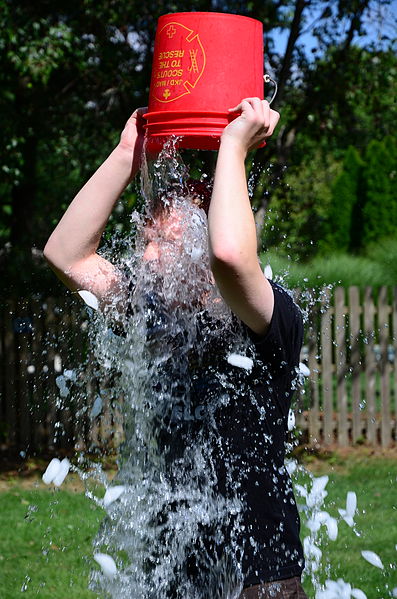5 Takeaways from the Ice Bucket Challenge for the Planned Giving World
Raise your hand if you’ve recently participated in the ice bucket challenge. Raise your hand if you know someone who did.
Whatever you think about dumping freezing cold water on your head as a fundraising tactic, you have to admit, it was tremendously effective. Since introducing the challenge, the ALS Association has raised over $111 million!

The ice bucket phenomenon is a powerful exercise in peer-to-peer fundraising. The gist is this: a friend nominates you to do the ice bucket challenge. You have 24 hours to either donate $100 to the ALS Association or film yourself dumping a bucket of ice water on your head and give just $10. In your film, you nominate at least two others to take the challenge. And so it spreads.
To find new legacy society members, organizations need to tap into the power of personal networks, too. In addition to board members, existing legacy society members can be your best resource for expanding your marketing reach beyond your existing donor base.
In previous PG Calc blog posts, we’ve discussed the importance of social media to charitable organizations. We’ve also cautioned against pouring too many resources into it. And we’re not reneging on this advice; I don’t recommend you go out and try to create your charity’s own version of the ice bucket challenge. However, there are several lessons in peer-to-peer fundraising you can apply to marketing your legacy society:
- Recognize legacy society members and make membership highly visible. The Icebucket Challenge would never have gone viral if nominees hadn’t posted videos online for all to see. Similarly, you should list member names and use testimonials and videos whenever possible on your planned giving website. These tactics build public awareness for your group. Getting their picture on a website is enough impetus for many people to want to e-mail a link to their friends.
- Encourage donors to tell their own story about your mission. Peer-to-peer fundraising works by creating credibility. The ice bucket video provided a forum for nominees to comment on why the ALS Association was important to them, and was initiated by ALS patients – not the association. Donor stories are always more powerful than any marketing copy that you could write.
- When considering ways to motivate your prospective donors, make a specific and time-sensitive offer. Ice bucket nominees had 24 hours to complete the challenge, and only two options – donate or soak themselves. Planned gifts are not typically this transactional, but if donors know that there is a timeframe, the deadline will create a sense of urgency that helps move people to action. Encourage people to make their intentions known in time to be recognized in time for a certain event.
- Use a personal touch! The act of triumphantly dousing comrades in water has a storied history in the sports world, making it a fitting way to raise awareness for a disease that most famously afflicted Yankee legend Lou Gehrig. Thoughtfully designing legacy events around your mission strengthens the bond of donors to the organization -- and to each other. And community will beget community. So offer donors to your arts organization an exclusive gallery tour with a curator. Invite university alumni to tea with an esteemed professor. Give your organization’s donors an experience so meaningful and memorable they’ll want to share it with their family and friends.
- Direct response marketing is highly effective. Direct response marketing means communicating straight to the prospect. The nominations powered the ice bucket challenge – they were direct, public appeals, by name. It’s difficult to ignore such a direct request, especially when that request comes from the mouth of a close friend or family member. Whenever possible, personalize your communication with donors. Meet face to face, pick up the phone rather than e-mailing, and remember prospects’ names and their kids’ names.
The Internet was invented expressly for the purpose of facilitating person-to-person communication.The Ice Bucket Challenge highlights the incredible power of the Internet to influence action. You too can influence the actions of potential donors by following these five peer-to-peer fundraising ideas. You don’t have to soak your donor prospects to close more gifts, but more person-to-person marketing might just have you drowning in donors.



Submit a Comment